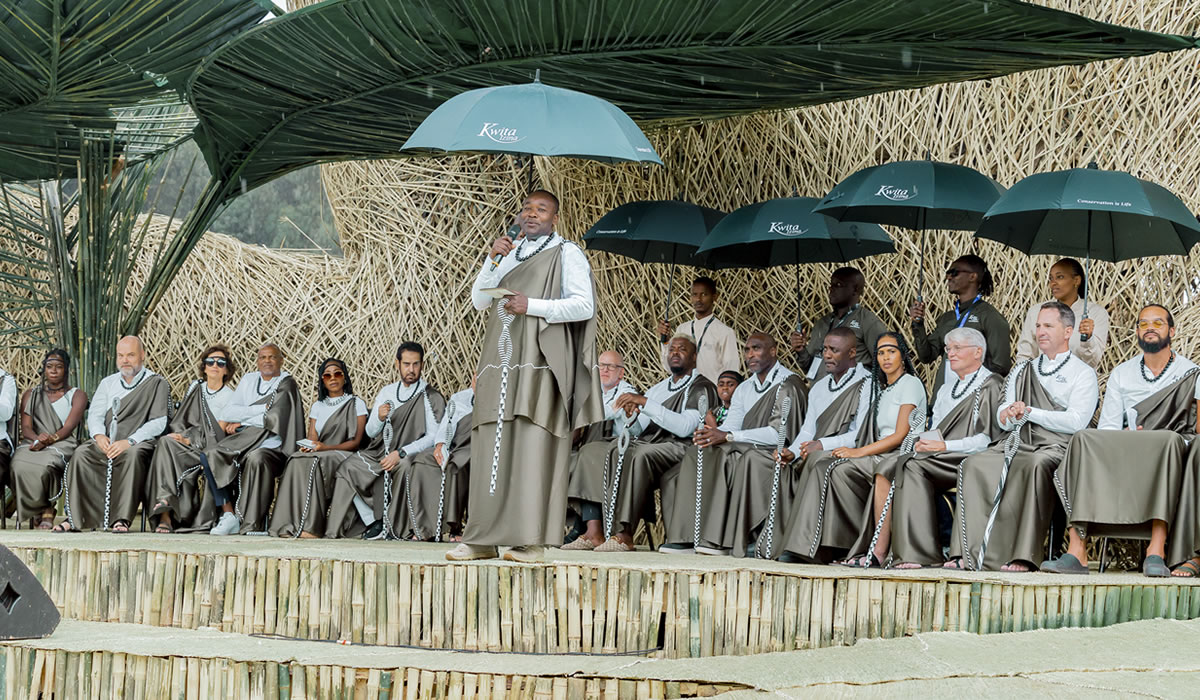Rwanda, often known for its breathtaking natural landscapes, wildlife conservation efforts, and remarkable post-genocide transformation,…

Kwita Izina: Rwanda’s Gorilla Naming Ceremony
Every year in the heart of Africa, a truly unique and inspiring celebration unfolds in the foothills of the Virunga Mountains in Rwanda. Known as Kwita Izina, this annual gorilla naming ceremony has become one of the world’s most recognized conservation events. More than a ceremonial gesture, Kwita Izina reflects Rwanda’s deep commitment to preserving its natural heritage, especially the endangered mountain gorilla, and serves as a model for successful wildlife conservation and community involvement.
But what exactly is Kwita Izina? What does it represent, and why has it gained such significance locally and internationally?
The Origins and Meaning of Kwita Izina
The term Kwita Izina is derived from an age-old Rwandan tradition of naming newborn children in a communal setting. In the past, families would hold gatherings to bestow meaningful names upon their infants, often reflecting the circumstances of the birth, hopes for the child, or a connection to ancestors and culture. This naming ritual has now been adapted to one of Rwanda’s most precious animal species, the mountain gorilla.
Kwita Izina as we know it today was officially launched in 2005 by the Rwanda Development Board (RDB) in partnership with conservation organizations. The idea was simple but powerful: create a platform to celebrate the birth of baby gorillas and raise awareness around conservation efforts. Each year, newly born gorillas in Volcanoes National Park are given names in a vibrant and symbolic ceremony that brings together Rwandans, international guests, conservationists, celebrities, and tourists.
The ceremony not only celebrates life but also marks Rwanda’s progress in wildlife protection and environmental sustainability. Since its inception, more than 350 baby gorillas have been named through this initiative, highlighting the success of Rwanda’s conservation policies and its strong community-based approach.
A Global Celebration with Local Roots
Held in the small town of Kinigi, near the entrance to Volcanoes National Park, Kwita Izina is a week-long event culminating in a grand celebration. While it started as a relatively small affair, it has grown over the years into a high-profile event that garners international attention.
The atmosphere at the ceremony is festive and filled with joy. Traditional dancers, local musicians, schoolchildren, government officials, wildlife experts, and tourists all come together to participate in the naming of the baby gorillas. The community plays a central role, with local people not only attending the event but often being involved in planning, performing, and supporting conservation efforts year-round.
At the heart of the ceremony is the gorilla naming, where invited guests often influential figures from around the world announce the names of the newborn gorillas. These names are not chosen randomly; each one is carefully selected to reflect the gorilla’s behavior, the circumstances of its birth, the hopes for its future, or a message tied to conservation. For example, names like “Umuryango” (meaning “family”) or “Inkingi” (meaning “pillar”) might be chosen to emphasize social bonds, strength, or the pillars of sustainability.
These naming ceremonies also offer an opportunity for Rwanda to showcase its growing role as a global leader in conservation and eco-tourism. The government has made tremendous strides in protecting its biodiversity while simultaneously empowering communities and boosting the tourism sector.

Conservation Success Stories
Rwanda’s mountain gorilla population has seen a remarkable recovery over the last few decades. Thanks to effective conservation strategies, strict anti-poaching measures, habitat restoration, and intensive community engagement, the gorilla population in Volcanoes National Park is steadily growing. According to the 2018 mountain gorilla census, the total population of mountain gorillas across the Virunga Massif (which includes Rwanda, Uganda, and the Democratic Republic of Congo) rose to over 1,000 individuals, a significant increase from previous decades when the species was critically endangered.
This success is not accidental, it is the result of coordinated efforts between government agencies, conservation organizations like the Dian Fossey Gorilla Fund, local communities, and international donors. Rwanda’s model is built on the idea that conservation and community development must go hand in hand. The Kwita Izina ceremony symbolizes this synergy, serving both as a celebration of wildlife and a reminder of the importance of coexistence.
Community Involvement: A Key Pillar
One of the most outstanding aspects of Rwanda’s approach to conservation is its emphasis on community engagement. People living around the park are not just passive observers, they are active participants and beneficiaries of conservation efforts.
Through revenue sharing programs, a percentage of tourism income from gorilla trekking permits is invested back into the local communities. These funds support infrastructure projects such as building schools, health centers, roads, and clean water systems. This not only improves living conditions but also fosters a sense of ownership and pride in conservation work.
Additionally, many locals are employed as park rangers, guides, trackers, or hospitality staff, creating employment opportunities directly tied to protecting wildlife. By ensuring that communities benefit economically from the survival of gorillas, Rwanda has been able to align conservation goals with the needs and aspirations of its people.
This community-first model is one of the main reasons for the sustained success of conservation in Rwanda and is regularly highlighted during Kwita Izina celebrations.
Eco-Tourism and Sustainable Development
Rwanda has positioned itself as a premier destination for eco-tourism, with mountain gorilla trekking being the crown jewel. Every year, thousands of tourists visit Volcanoes National Park for a chance to see these majestic creatures in their natural habitat. The experience is often described as life-changing, as visitors witness firsthand the intelligence, social structure, and emotional depth of gorilla families.
Kwita Izina plays a strategic role in promoting Rwanda’s tourism industry. By drawing attention to conservation achievements and providing a window into Rwanda’s culture, it enhances the country’s global image as a responsible and welcoming destination.
In recent years, Rwanda has made significant investments in luxury and sustainable tourism infrastructure, attracting high-end travelers while maintaining a strong commitment to low-impact, ethical travel. Gorilla trekking permits are deliberately priced at a premium to limit the number of visitors and reduce environmental strain, while generating significant funds for conservation.
Cultural Significance and Global Impact
Beyond the ecological and economic aspects, Kwita Izina also serves as a powerful cultural event. It reinforces national pride, promotes traditional Rwandan values, and strengthens the bond between nature and humanity. The names given to baby gorillas carry meaning and symbolism that echo through the communities and beyond.
Internationally, the ceremony has become a platform for advocacy and education. It reminds the world that conservation is not just about protecting animals; it’s about building a future where humans and wildlife can thrive together. The involvement of celebrities, global conservationists, and dignitaries helps amplify this message, inspiring other countries to adopt similar approaches.
Looking to the Future
As climate change, habitat loss, and poaching continue to threaten wildlife around the world, Rwanda’s example through Kwita Izina provides hope. It shows that with commitment, collaboration, and creativity, it is possible to reverse the tide of extinction and create meaningful, lasting impact.
Each baby gorilla named is not just a new life celebrated but a milestone in a journey toward sustainability. Each name is a story, a voice, and a call to action for future generations to cherish and protect our natural world.
For anyone passionate about conservation, culture, or simply looking for an unforgettable experience, attending Kwita Izina in Rwanda is a bucket-list-worthy event. It’s not just a ceremony it’s a movement, a celebration of life, and a testament to the power of unity in preserving our planet.
So, if you find yourself in Rwanda in September, make your way to the mountains. Witness the joy, the music, the stories, and the shared hope that make Kwita Izina an extraordinary event. You’ll leave with more than memories, you’ll leave inspired.




